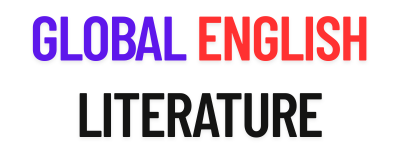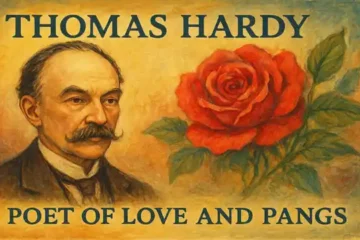Introduction to “The Lamb”:
William Blake’s “The Lamb”, one of the most celebrated lyrics from “Songs of Innocence”, captures the essence of purity, simplicity, and childlike faith. In the Introduction to Songs of Innocence, Blake presents a child who urges the poet to sing about a lamb. The poet plays the song on his pipe, and the child, deeply moved, requests to hear it again. Overwhelmed with joy, the child weeps as the poet sings once more in a cheerful tone. This touching moment inspires the poet to use his “rural pen” to compose poems that bring delight to every child.

Symbolically, the lamb represents innocence, meekness, and divine love. In Christian tradition, the Lamb is closely associated with Jesus Christ, often called the “Lamb of God.” Thus, the poem not only celebrates the gentle qualities of the creature but also reflects Christ’s role as a saviour. To fully appreciate Blake’s vision, “The Lamb” should be studied alongside “The Tyger” from Songs of Experience. While the lamb embodies gentleness, purity, and weakness, the tiger signifies power, ferocity, and awe. As the philosopher Jacob Boehme observed, the universe is shaped by these dual forces—the lamb-like and the tiger-like. Blake identifies them as Innocence and Experience, two complementary aspects of divine reality. To the meek, God appears as a lamb; to the fallen or rebellious, He is revealed as a tiger.
Summary of “The Lamb” by William Blake:
The Child’s Innocent Questions
In “The Lamb”, William Blake presents a little child who playfully engages with a lamb. Out of pure innocence, the child begins to ask simple yet profound questions to the lamb. He wonders if the lamb knows about its creator—the one who gave it life, food, and a beautiful world filled with delight. The child notices how the lamb has been blessed with soft wool, a bright coat, and a sweet voice. However, he does not yet realise that this same creator is also the maker of all beings, whether human or animal. The lamb, in this sense, becomes a symbol of child Jesus, the Son of God.
The Maker as Jesus Christ
The child then explains to the lamb that its maker is none other than Jesus Christ, who is often called the “Lamb of God.” Jesus is gentle, meek, and mild, just like the little lamb. He came into the world as a child, embodying innocence and purity.
Unity of the Child and the Lamb
The poem beautifully emphasizes the closeness between the child and the lamb, as both belong to the same realm of innocence and purity. This shared bond allows the child to identify himself with Jesus, calling himself and the lamb by His name. Because of their innocence and pure hearts, both the child and the lamb receive God’s blessing.
Critical Analysis of the Poem “The Lamb”:
Introduction:
William Blake is a great poet. “The Lamb” is one of his most popular lyrics. It is extracted from Songs of Innocence. In Introduction to Songs of Innocence, a child requests the poet to compose a song about a lamb. The poet composes it with a rural pen that fills the song with sweetness, simplicity and delight. It makes every child happy.
And I made a rural pen,
And I Stain’d the water clear,
And I wrote any happy songs
Every child may joy to hear.
The present poem is a composition about a lamb.
Development of Thought:
It is a simple lyric in two stanzas. The poem opens with a lovely conversation between a little child and a little lamb.
Little Lamb, who made thee?
Dost thou know who made thee?
A little child plays with a little lamb and out of innocence asks if the lamb knows the name of his maker who gave him life, food and the whole world of delight. The maker has blessed him with a soft wooly skin of bright colour and sweet tender voice.
Little Lamb, who made thee?
Dost thou know who made thee?
Gave thee life, & bid thee feed
By the stream & o’er the mead;
Gave thee clothing of delight,
Softest clothing, wooly, bright;
Gave thee such a tender voice,
Making all the vales rejoice?
Little Lamb, who made thee?
Dost thou know who made thee?
The child tells the lambs in the second stanza that his maker is known by his name for child Jesus is called the little lamb. Jesus is gentle and mild like a lamb. He appeared in the world as a child. Therefore the little child and the little lamb are his representatives. They are pure and innocent at heart and God blesses them. Thus in simple words the post point out the divine nature of all pure and innocent creatures whether man or beast.
Little Lamb, I’ll tell thee,
Little Lamb, I’ll tell thee;
He is called by thy name,
For he calls himself a Lamb.
He is meek, & he is mild;
He became a little child.
I, a child & thou a lamb,
We are called by his name.
Little Lamb, God bless thee!
Little Lamb, God bless thee!
Great Ideas:
This short and simple lyric is filled with great ideas. A lamb is a young member of church – flock who is innocent, week and dear. The Lamb of God is Jesus Christ. In Christianity, the lamb is symbol of Jesus. In fact two diverse symbols are used for God: the lamb and the tiger. The lamb is gentle, innocent and weak while the tiger is violent, strong and terrible. To the gentle God appears as a lamb and to the sinners as a violent tiger. Jesus is human as well as divine. Every child is representative of God for his heart in filled with purity and innocence. God is present in all whether man or beast.
A Symbolic Poem:
Blake’s The Lamb is a symbolic poem. The little lamb is symbol of child Jesus. Jesus is son of God. The little child wants to know if child Jesus is aware of his divine nature. The child is tender, pure and innocent. Therefore God appears before him on the lamb. God is proud to be meek and mild. Child Jesus wishes that people should embrace him like the little lamb.
He is called by thy name,
For he calls himself a Lamb.
He is meek, & he is mild;
He became a little child.
The poet wishes to inspire inward strength among all tender creatures who are pure and innocent as heart. The poet points it out that these virtues are divine and attract God’s blessings for them.
Sensuous Art:
The poem is rich in sensuous art. The poet draws a lively word picture of the lamb:
Gave thee clothing of delight,
Softest clothing, wooly and bright,
Give thee such a tender voice,
Making all the vales rejoice?



